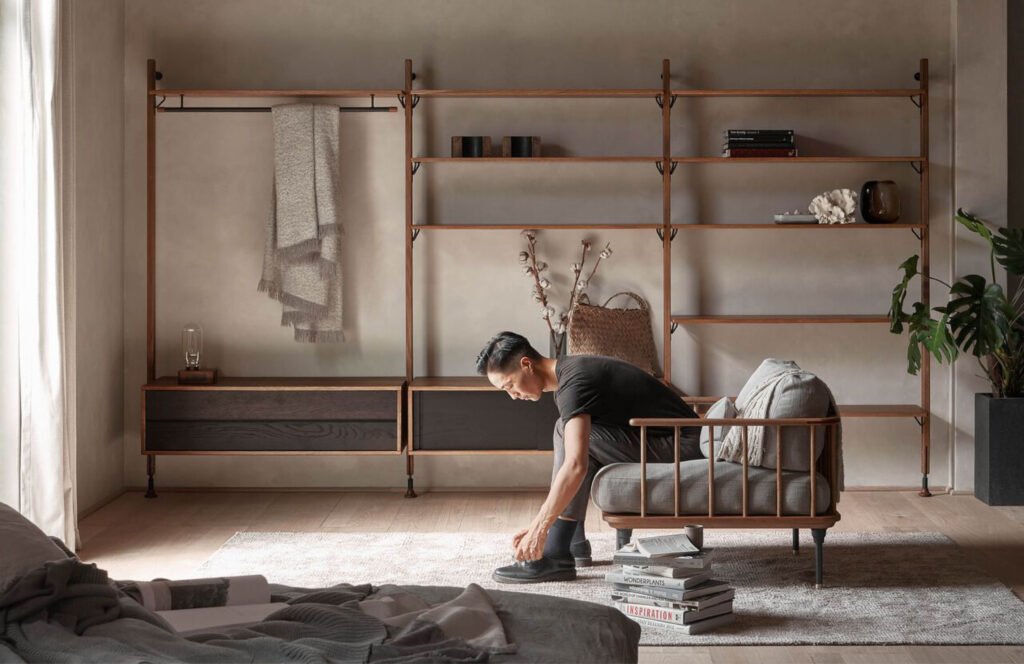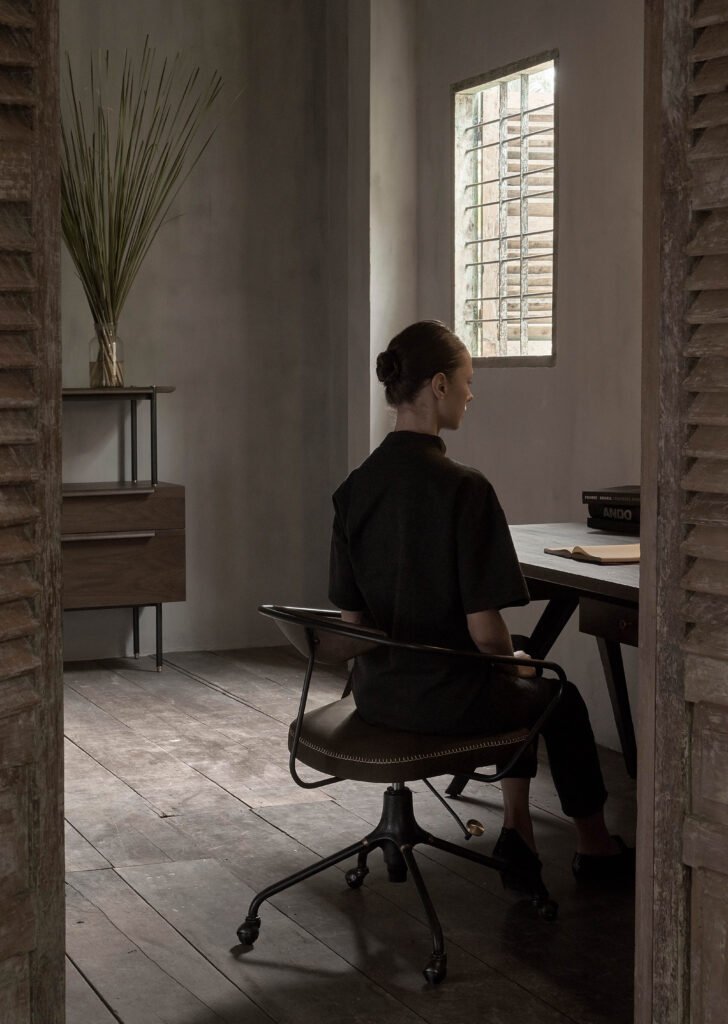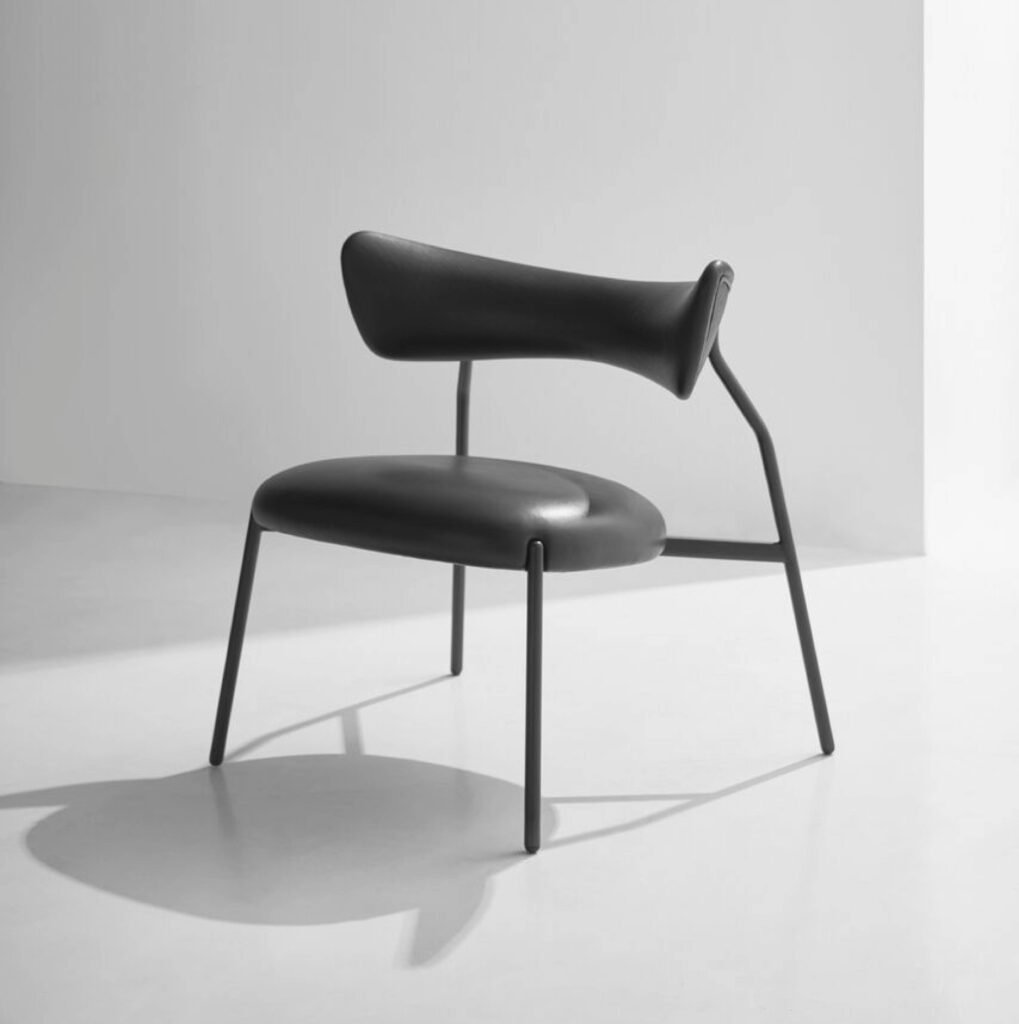Interview Patrick Kasingsing
Images District 8


Hello! Kindly introduce yourself.
Hello! I am Darren Chew, the founder of District Eight – a lifestyle furnishing brand based in Vietnam since 2010. The company has grown into an integrated studio, development team, and factory (including wood, metal, and upholstery working capacities). We have aimed from the start to elevate the workmanship of the manufacturer and to develop collections that can achieve the highest quality standards while maintaining a handcrafted finish.
What brought about your fascinations with industrial design and furniture-making?
I have been mainly inspired by our environment here in HCMC, where I’ve been living for almost 20 years. Old HCMC is a mix of colonial and modernist architecture which, due to the fast modernization of Ho Chi Minh City, is being replaced with skyscrapers.
Those old buildings—created, furnished, and used with purpose and quality—were made to last a lifetime. That is the ethos we like to apply to furniture-making, where we try to work with the best materials available to create products with an old-world quality.
What is the studio’s design philosophy? How is this manifested in your product portfolio?
Our design approach stems from the three distinct historical influences in modern Vietnam: the French colonial period, modernist architecture influenced by the time before the war with America, and Saigon’s current drive into being a modern city. You can see those influences layering the collection.
What made Vietnam the perfect place to create handmade furniture pieces? How easy or difficult was it to set up shop in Ho Chi Minh City?
I don’t think we could have done this anywhere else. HCMC still maintains a massive ecosystem of small enterprises, with hand-work skills lost or not commercially viable elsewhere. Our luck was bringing together the right people who were willing to learn and strive for better quality, leading to the relative success of our products around the world. I think the challenge has been to educate and build the team in a market without the design and quality influence. It is not hard, but it does take time.


“Each step of furniture design and making has to make sense and contribute to elevating people’s lives in complex ways.”
Are there any special processes distinct to District Eight employed in the creation of its furniture pieces?
The processes are quite straightforward. We would not say there is a secret ingredient, a hidden step that sets us apart. Everyone is actually welcome to visit our factories. However, we do have a distinct way of caring about each of those steps.
Our process, from design to the last steps of manufacturing, is designed to obtain our signature finish. We make sure that our idea of a product (which is hopefully distinct from others) will be produced wholeheartedly and with high fidelity. There is a human touch at every step of the way.
Would you say that there is a difference in the connection and comfort offered by handmade products to factory-manufactured ones?
Of course. The difference is usually in the intention of the maker. When developing a mass-manufactured piece of furniture, the maker will be looking to optimize many parameters, with an economical approach. This means quality and comfort are not the priority, and the results will show. On the other hand, handmade (or what we would call crafted products), are made with a clear intention to put comfort and quality at the top. For that reason, we believe that maintaining a handmade aspect is a luxury, but we also do our best to offer that at a fair price.
Your Instagram feed cites a lot of architectural influences for your pieces. How easy or difficult is it to adapt and pay homage to architecture in furniture design?
The interesting thing about architectural movements is that they are formulaic. It results in quite a scientific approach to furniture design, where we deconstruct the influences that we referenced to, zoning in on materials, shapes, and intentions that composed these architectural works. In our point of view, the translation to furniture doesn’t need to be literal. What we interpret has to be expressed within the constraints of furniture design. We don’t work with the same parameters of usage, but we might aim for a similar impression or experience for the user.
What attracted you to the industrial aesthetic you often employ in your pieces? Would you say that this aesthetic is having a moment right now?
To clarify our industrial stance, it has now come to a point with our collections where industrial is not only an aesthetic but is now a core idea in our creative process. We create with an industrial mind, but other collections might not look that industrial. We believe that the moment for reclaimed, industrial-inspired, rugged spaces has passed, but it has left everyone in the design and interior communities with a distinct desire for quality and substance. We can now see that trend weave itself into contemporary design across the board. There is no genre defined yet for this post-industrial design movement, but we hope to discover and contribute further in the field by creating collections that can be recognized as classics while evolving with the world.




How important is process in the overall narrative of a furniture piece?
One might say that in furniture design and making, the process shows, maybe more than, say, in the fashion industry. The fact that furniture is lived with for a rather long time span makes the investment and the experience more explicit. What a fashion piece can convey in terms of identity is linked to the short-term and is usually achieved with simple design gestures. In contrast, a furniture piece will have to convey an idea that is interacted with at a slower pace. So the whole process comes into play. Each step of furniture design and making has to make sense and contribute to elevating people’s lives in complex ways.
What about the similarly named neighborhood attracted you to set up shop there?
Our first workshop, studio, and office were based in District 8 of Ho Chi Minh City. The truth is that we have now moved out of the district, but we still carry the spirit. District 8 is by definition a historically industrial neighborhood. While nowadays, most large-scale production is located around the city, in towns like Binh Duong or Dong Nai, the older industries and traditional commerce of Ho Chi Minh City passed through District 8. It is located along the river, allowing for an extra means of transportation, and conveniently, the main national roads also track nearby. To this day, it’s still a vibrant district conveniently sprawling on both sides of the river, although it’s not a central district.




What steps does your studio take to ensure materials used are sourced sustainably?
From our first collection, which used reclaimed and recycled materials sourced locally from buildings lost in the regeneration of HCMC, we have always strived to use only sustainable products. That is why in our collection, you find a lot of oak from managed forests instead of old-growth tropical hardwoods. When buying our products, you will notice our packaging is also designed to minimize plastic and foam.
Aside from furniture-making, what other services and projects do District 8 take on?
We are currently working on developing a space where the District Eight lifestyle can be expressed further, engulfing accessories and home objects.
We also are amazed by the widespread success of our Games collection (Foosball Table, Ping Pong Table, Shuffleboard) among creatives around the world and are dreaming to connect all the people who’ve played our games through a community.
We’re currently trying to reach out with #D8sportingclub as a social media initiative and will encourage future buyers of the games to join the club. Wouldn’t it be amazing to have a way to know, wherever you travel, that there is a like-minded space nearby where you can join a game?
What lies in the future of District Eight? Are there plans to set up shop and factories abroad?
Much like Ho Chi Minh City’s current dynamic, we are open to collaborations. Setting up shop would be an exciting idea, and we would do so if the right collaboration could materialize.
Our first foray into spaces overseas is our next pop-up showroom, which will be set in Milan’s Salone del Mobile. •


More on District Eight’s furniture pursuits at districteight.com, and at @districteight on Instagram.
This interview first appeared on Kanto’s 2018 Craft issue.

